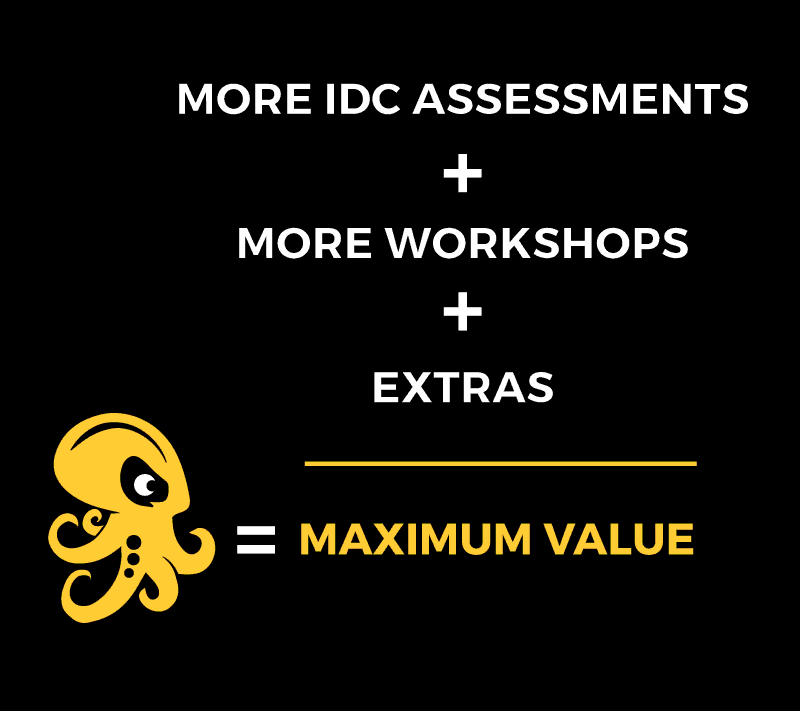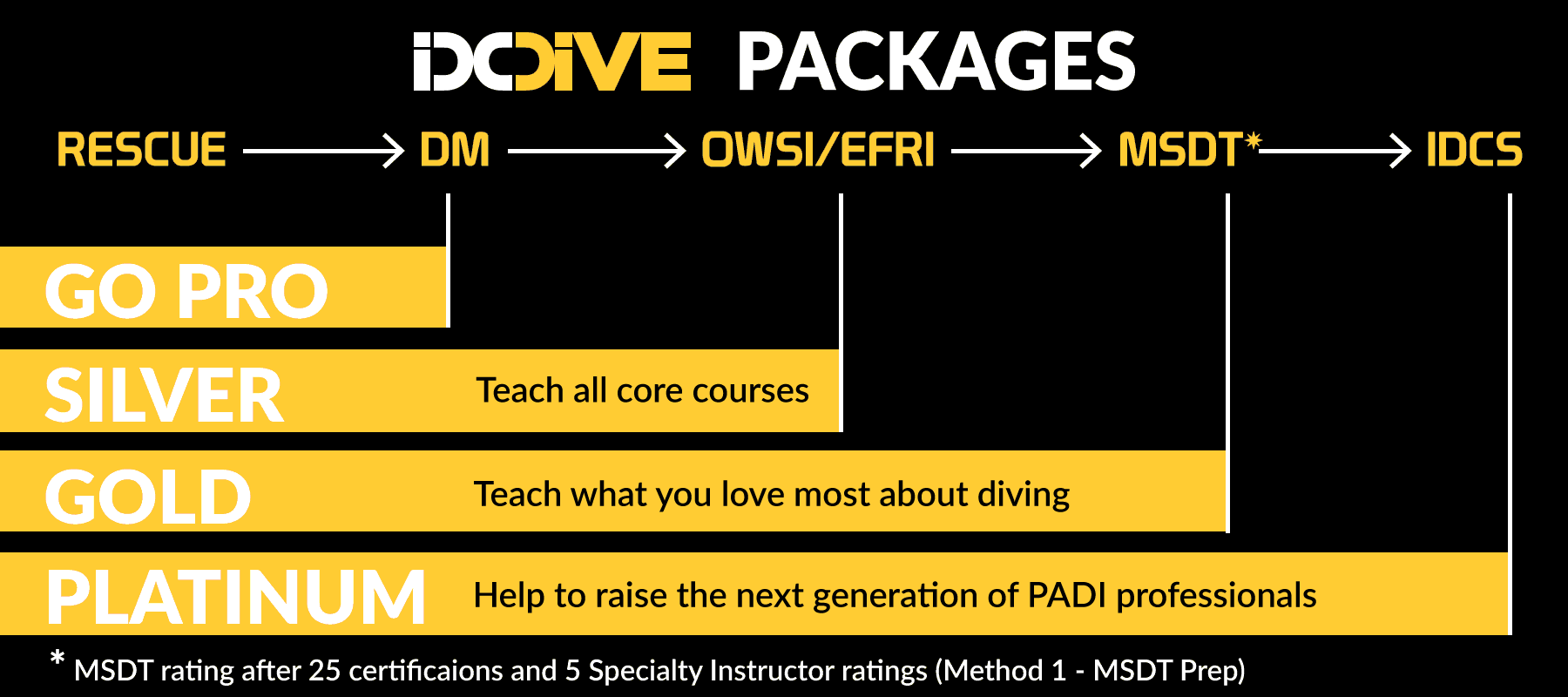Dive Theory Physics
DOM GIBBINGS

Dive Theory: Physics
Once you have followed our study guidelines, use these Revision guides to help you memorise the required knowledge for your IDC & IE dive theory exams.
Water
Water & Heat
Water has a high heat capacity. Molecules are closer together (denser), therefore water dissipates heat faster than air. We lose heat 20 times faster in water than in air.
Factors of heat transmission in order of effect on a diver:
- conduction (direct contact)
- convection (via fluids and movement)
- radiation (electromagnetic waves)
HEAT LOSS = Mainly due to conduction
Water & Light
The speed of light depends on the density of the medium (denser = slower)
REFRACTION = as light waves enter water (a denser medium), they bend. This causes objects to appear 33% larger and 25% closer. 33 is “LARGER” than 25.
VISUAL REVERSAL = turbidity (suspended particles in water) may cause objects to appear farther away.
REFRACTION = 33% larger; 25 % closer
VISUAL REVERSAL = far away (turbidity)
Water & Sound
Sound (pressure waves) travel faster in a denser, more elastic medium. In water, sound travels four times faster than in air. SOUND and FOUR both contain the vowel combo of ‘ou’
Our brain determines sound direction by delay between sound waves reaching the ears. This makes determining the direction of sound difficult, it is usually perceived as being overhead.
SOUND = travel 4 times faster
SOUND comes OVERHEAD
Buoyancy & Weight
Archimedes Principle
“An object wholly or partially immersed in a fluid is buoyed up by a force equal to the weight of the fluid displaced by the object”
These constants are provided on every exam:
1 liter fresh water (lfw) = 1kg
1 liter salt water (lsw) = 1.03kg
Determining Buoyancy
You must know:
O ↓ (weight of object)
W (weight of water = constant)
D ↑ (displaced fluid)
If one is missing “the answer can’t be determined“. The depth is irrelevant.
Calculating Changes in Buoyancy
O x W = D
Object’s volume x constant = weight of water displaced
First you must convert D (litres) in kg.
Is the object in fresh or salt water, this determines the constant you use.
1lfw = 1kg or 1lsw = 1.03kg
O x W = D
Object’s volume (displaced fluid = litres) x constant = weight of water displaced (kg)
Tip: Keep track of the units – write kg, lfw or lsw by the figures
Water weight(displacement) – Object’s weight = Positive or negative buoyancy
- – number = sinks
- + number = floats
- 0 = neutral
Example = You plan to recover in sea water a 150kg object that displaces 60l. How much air is needed to make the object neutrally buoyant? (85.6)
Example = An object that weighs 50kg and displaces 300l. How much weight do you need to add to the object to make it 10kg negative on the bottom? (269)
Pressure
Determining Buoyancy
Pressure = a force or weight acting on some unit of area (kg/cm2)
ATMOSPHERIC PRESSURE= the air pressure at sea level = 1 atm /bar (14.7 psi)
GAUGE PRESSURE = measured pressure minus atmospheric pressure (atm gauge)
ABSOLUTE PRESSURE = total pressure exerted, gauge + atmospheric (ata)
AMBIENT PRESSURE = surrounding pressure, same as absolute pressure.
Calculating Underwater Pressure
Constants
Sea Water = 1 atm every 10 m = 0.100 atm per meter (1msw = 0.1atm/bar)
Fresh Water = 1 atm every 10.3 m = 0.97 atm per meter (1mfw = 0.097atm/bar)
Example: What are the gauge and absolute pressures in fresh water at a depth of 22.5 metres? (2.18atm gauge ; 3.18ata)
Example: The pressure at 18 metres in sea water equals the same pressure as which depth in fresh water? (18.5m)
Pressure, Volume & Density

Boyle’s Law
“Gas volume is inversely proportional to pressure. If the pressure increases, the volume must decrease proportionately. If the pressure decreases, the volume must increase proportionately”
PV = K
P = absolute pressure (ata / bar)
V = volume
K = constant
For example:
V1 x P1 = V2 x P2
V2 = P1 / (P2 x V1)
Example: If you take a gas volume of 27l from 32m to 17m in fresh water, what will the new volume be? (41.8)
Example: A diver’s air consumption rate is 2 bar/minute at the surface. What is the diver’s air consumption rate likely to be at 30 m? (8)
Example: if a diver air consumption rate is 8 bar/minute at the 10 m. What is it likely to be at 40m? (20)
Pressure, Volume & Temperature
Pressure, Volume & Temperature
Heat is the energy of molecular motion.
If you heat gases in a inflexible container and the volume remains unchanged (such as in a scuba tank), the molecules move more rapidly, increasing the pressure.
Charle’s Law
Describes the influence of temperature on gas behavior.
“If the pressure remains constant, the volume increases as the temperature increases. If you keep the volume constant, the pressure increases as the temperature increases”
Example: If you put a tank and a balloon in a freezer, what will happen? The balloon’s volume will change as it is a flexible container. Tank volume will remain (non-flexible container) therefore its pressure will change.
Rule of Thumb
In a scuba cylinder, pressure will change 0.6 bar for every change in temperature of 1°C
Ideal General Gas Law
Ideal General Gas Law combines Boyle’s and Charles’ Laws: pressure, volume and temperature.
P x V = K x T
P = absolute pressure (ata)
V = volume (liters)
K = constant
T = absolute Temperature
How to convert Celsius to Kelvin (K = °C + 273)
Example: A 12 liter cylinder reaches 52°C while being filled to 200 bar. Later, will be use in 7°C water. What will the pressure be when the tank enters in the water? (173bar)
Behaviour of Gasses Underwater: Partial Pressure
Partial Pressure
PARTIAL PRESSURE = in a gas mixture, each gas exerts it individual pressure, independent of other gases in the mixture
Total pressure of air (100%) = Partial pressure of oxygen (21%) + partial pressure of nitrogen (79%)
The body responds to a gas based on its partial pressure – the higher the partial pressure, the greater the potential physiological effect.
Dalton’s Law
“The total pressure exerted by a mixture of gases is equal to the sum of the pressures of each of the different gases making up the mixture -each gas acting as if it alone were present and occupied the total volume”
Ptotal = P1 + P2 + P3 ….
Where Ptotal is the total absolute pressure
and P1 (etc) is the partial pressure of each component gas
P1 = Ptotal x % volume gas1
Example: What is the PO2 of air at 40 meters? (1.05 ata)
Example: what is the PO2 when breathing 100% at the surface? (1 ata)
Example: An air mixture has 0.5% Carbon Monoxide. Breathing this air at 40m would be the equivalent of breathing what percent at the surface? (2.5%)
EANx and Dalton’s Law
Equivalent Air Depth (EAD) allows you to use any EANx blend with a conventional air table. The formula finds the depth which PN2 would be the same using air than using the EANx
EAD = (1 – oxygen %) x (depth in meters +10) -10
0.79
EANx and Dalton Law = you can use the Dalton Law formula PA = Ptotal x % volume A to determine the maximum depth for a EANx blend , which is the depth when PO2 reachs 1.4 bar/ata.
1.4 bar/ata = Ptotal x volume A
Behaviour of Gasses Underwater: Gas Absorption and Elimination
Henry’s Law
“The amount of gas that dissolves into a liquid at a given temperature is directly proportional to the partial pressure of that gas”
Saturation
SATURATION = when the gas pressure within a liquid is the same as the pressure of the gas in contact with the liquid.
What happens when you raise the pressure of gas in contact with a liquid? More gas dissolves into the liquid until eventually reaches equilibrium or saturation.
SUPERSATURATION = when the gas pressure within a liquid is greater than the pressure of the gas in contact with the liquid
What happens when you quickly reduce the pressure on a liquid that is saturated? The gas within the liquid cannot remain in solution and bubbles form.
⎮ Privacy Notice ⎮ Cookies Policy ⎮ Sitemap ⎮ © IDC DIVE 2018, Powered by Katuak






